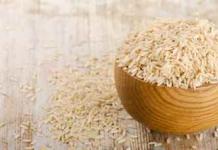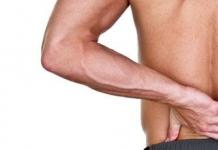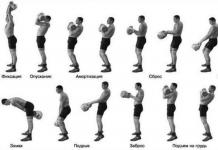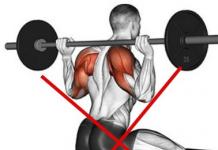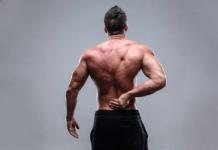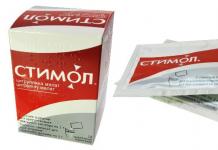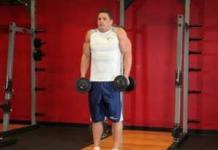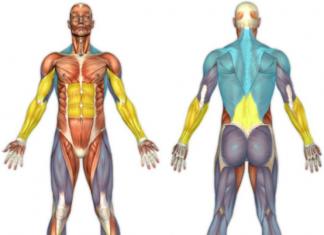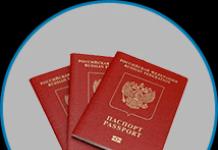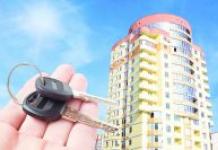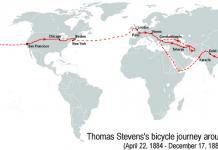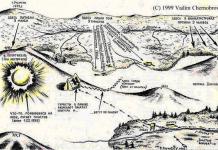It so happens that after squatting, the lower back hurts, although during the exercise you did not feel any discomfort. This happens if you have done something wrong, putting too much stress on the muscles and spine. But the lower back can also hurt for other reasons. Let's figure out why exactly pain can arise and how to deal with it.
Why does my back hurt?
The lumbar region of the back can be painful for a variety of reasons.
Here are the main ones:
- Muscle pain. Typically, in the case of squats, it is a pulling pain in the lower back.
- Manifestations of osteochondrosis of the lumbar spine.
- Pinched nerve.
- Intervertebral hernia.
- Consequences of hypothermia.
Muscle pain
When the lower back begins to hurt after a squat, we say this: pulled the back, or ripped it off. In fact, if we train for the first time or put too much stress, the lumbar back will hurt in 90% of cases. And also, if you have not warmed up the lower back enough, which is most often the case, prolonged pain will appear.
The discomfort will continue for 2-7 days, depending on how much the muscle is overworked.
With the correct squat technique, the lower back should not hurt much.
Excessive soreness is a consequence of the fact that you compensated for the excess weight of the bar with the work of the muscles of the lower back. Most likely, you tilted the body forward more than necessary. And from the lowest point they came out due to the muscles of the back and only then the legs. Or they rounded the back at the lowest point. These are the wrong options for doing squats and are dangerous for your joints and muscles. Just here you can rip your back.
If you have muscular pain (you will know when it is a joint and when it is a muscle), use warm baths and pain relieving ointments. Follow the directions that come with the ointments. Ask someone to knead the sore muscle with their hands, it will hurt, but it is necessary! If the pain isn't too severe, a warm-up hyperextension approach can be done to help pump the blood into the aching muscle.
If the pain intensifies, and a bruise or yellowness has formed on the lower back, it is better to consult a traumatologist.
Usually it hurts from the tailbone to the bottom of the chest.
Osteochondrosis
With osteochondrosis, it is recommended to squat with small weights and strictly in a special belt. We recommend using a hard-ribbed orthopedic belt instead of athletic belts. You need to have additional support for your spine.
You can find out which belt is right for you with a doctor at any ultrasound center in your city. At the same time, clarify the diagnosis.
If you have a sore lumbar spine, all the more you should not bend and round your back while squatting. Make sure that the bar does not pull you forward. To do this, spread your legs wider. Remember how in? The wider the legs, the smaller the range of motion at the lower back. It's good for your back.
By the way, by improving your technique, you reduce to zero all the risks of aggravating the situation with your back.
With osteochondrosis, you may feel a sharp soreness during back exercises. More often it happens that discomfort occurs the next day or within 12 hours after training. You cannot bend without pain, it is difficult for you to sit for a long time, because the pain sensations intensify.
What to do? While you are in severe pain, avoid stressing your back. It's best not to go to the gym at all until the pain subsides. You need to see a neurologist, or visit an ultrasound center, there they will advise you on the right orthopedic belt. The latter will become your best friend for life.
Doctors may prescribe pain relievers or special vitamins for the nervous system. Then, when the pain subsides, you can start training. And be careful - pay attention to any discomfort. And don't listen to coaches who convince you to give a damn about all this caution. They are not doctors and never were. And, if anything, it will be your back that will hurt, and not theirs.
Pinched nerve
It happens suddenly and instantly. You just did a good rep. And then a sharp pain, and now you can hardly walk. Sometimes the pinch occurs at the bottom of the squat and you cannot get up. Well, if you've worked in Smith - you can put the barbell on the nearest block. But what about the barbell if you are not in Smith? And if there are no belayers?
Throw it back. If there are people behind you, warn them so that no one gets hurt. Then navigate according to the circumstances.
If you cannot walk, or if you have difficulty doing it, call an ambulance directly to the gym.
More often than not, the pain during exercise is not severe enough to prevent you from walking home. But in the evening, or the next day, it becomes so aggravated that you cannot move. In this case, you also need to call for help. It is necessary for doctors to relieve pain syndrome and eliminate pain problems.
Why this happened:
- You had a hernia and it pinched a nerve.
- You rounded your back
- You have taken too much weight, as a result of which the exercise technique has suffered.
There should not be any self-medication here. Only qualified medical care.
Intervertebral hernia
During training, you need to monitor the dynamics of changes in the hernia. If it grows, you should never squat.
If a person with a hernia experiences back pain from squats, you need to try different options: from losing weight to changing the exercise option (maybe you should go to Smith's car).
Treatment is carried out according to indications. If you have found your own individual way of squatting, you have no pain - everything is fine, do it. Just check the hernia regularly for changes.
Hypothermia
The cold may or may not be related to the gym.
Most often in the gym, sweating can be caught by the cold air from the air conditioner. At risk are girls who love to bare their lower back.
Exposing bare skin to cold can cause inflammation of the spinal nerves. It is very painful. The pain will appear within 12 hours after exposure to cold.
However, most often the pain after a cold has nothing to do with the gym, it is a consequence of a negligent attitude towards one's health.
Inflammation is treated on an outpatient basis, but sometimes you need to go to the hospital for a week for better treatment.
How to squat so your back doesn't hurt
Let's look at the main mistakes or negligence that lead to back pain after squatting.
- The legs are set narrowly. With this arrangement of the feet, the back is forced to bend strongly forward. It turns out that when standing up, the weight is pushed not by the legs, but by the back. It turns out that this is not a squat, but some kind of strange deadlift. Legs should be spread wide. At the same time, do not forget to part the socks to the sides, as well as the knees.
- The bar is not on the back muscles, but on the neck. In this case, you run the risk of earning also cervical osteochondrosis. Squatting with a barbell around your neck is also dangerous because the load on the lower back will increase significantly.
- You dropped your head down during the exercise. That is why such oversights cannot be made. The gaze during the squat should always be directed straight. If you bend your neck, it affects your entire spine. Including on the lower back.
- You don't warm up well. Always good . Pull it.
- Poor stretching is a common cause of many injuries and pain. Any exercise can be performed correctly only with good stretching. Again, stretch.
- Keep your lower back warm.
When you come to the gym, remember that although athletic performance is important, health should always come first!
Last updated article: 08/30/2014
Back pain is a very common problem among people who practice strength sports such as bodybuilding. What is it connected with, when these pains arise and how to avoid it all. Today we will talk about this problem.
Everyone knows that basic exercises are the key to success.
Unfortunately, many experienced, novice athletes sometimes overdo it with these exercises, in particular, not adhering to basic safety rules.
What should be done to avoid back injury?
In order to minimize the possibility of back injury, as well as avoid lower back pain, you need to adhere to very simple rules:
- When you perform any exercise, you should always adhere to the correct technique for performing the exercise. Especially if you are doing heavy basic exercises that put a lot of stress on your back.
- Do exercises that help, for example:
- If you have pain when squatting heavy weights, find alternative exercises. In this case, dumbbell squats are an excellent exercise.
- Always use when doing heavy, basic exercises when it comes to heavy weights.
- Always be in control of your movements.
Some points you should be aware of.
The weak link in our body is the lower back. It needs to be constantly strengthened, doing all sorts of exercises, for example: exercise "good morning", hyperextension, deadlift (not for beginners), and so on. Such exercises will help you strengthen your back, the muscular frame of the ridge. This will give you the ability to control and thoroughly work your leg muscles while squatting. Of course, you shouldn't forget about the abdominal muscles, which are also important in the role of supporting the entire body during the squat.
Deadlifts should not be performed if you are a beginner, in the first couples, you will have enough isolating exercises, bench press, squats (with small weights). And only then, after a while, when your body gets stronger, you can include a little deadlift in the program.
Always warm up well before barbell squats. Of course, you should always do it, but in this article we pay more attention to the back and squats. Before performing working weights, you need to stretch not only your back, but also your legs well, performing several warm-up sets with a lot of repetitions. Before squatting, you need to put on an athletic belt to keep your vertebrae secure. If you are a beginner and the weights are very light, you can do without a belt. But over time, it should become a must-have in your workouts.
Squats should be performed strictly according to the technique so that the main load is not on the back, but on the muscles of the thighs. Thus, it will significantly reduce the possibility of back pain.
There is a simulator called the Smith simulator. It can make your life much easier, because exercising in this simulator significantly relieves the load on the back and increases the load on the hips. However, do not assume that exercising with this machine will weaken your legs. Even Dorian Yates touted this machine in his interview, where he said that his legs became more massive precisely because of doing squats in the Smith machine.
If you are still worried about your back, then it is better for a while, to exclude squats from
Hello! Yesterday I did squats with a barbell after which I started having lower back pain. Including on the lower back. Squatting with a barbell around your neck is also dangerous because the load on the lower back will increase significantly.
It so happens that after squatting, the lower back hurts, although during the exercise you did not feel any discomfort. But the lower back can also hurt for other reasons. Let's figure out why exactly pain can arise and how to deal with it. Hello. In this article, I want to talk about the causes of back injuries, in particular the lower back.
Let's look at the main mistakes or negligence that lead to back pain after squatting.
- The legs are set narrowly. With this arrangement of the feet, the back is forced to bend strongly forward. It turns out that when standing up, the weight is pushed not by the legs, but by the back. It turns out that this is not a squat, but some kind of strange deadlift. Legs should be spread wide. At the same time, do not forget to part the socks to the sides, as well as the knees.
- The bar is not on the back muscles, but on the neck. In this case, you run the risk of earning also cervical osteochondrosis. Squatting with a barbell around your neck is also dangerous because the load on the lower back will increase significantly.
- You dropped your head down during the exercise. That is why such oversights cannot be made. The gaze during the squat should always be directed straight. If you bend your neck, it affects your entire spine. Including on the lower back.
- You don't warm up well. Always stretch your lower back well. Pull it.
- Poor stretching is a common cause of many injuries and pain. Any exercise can be performed correctly only with good stretching. Again, stretch.
- Keep your lower back warm.
When you come to the gym, remember that although athletic performance is important, health should always come first!
What to do if lower back pain after squats?
Squats with a barbell in the style of "sumo" once became a real challenge for me, not because it was very difficult for me, but because I was seriously frightened by the reaction of my back to them - there was discomfort while walking and unexpected numbness in the lumbar region ...
Even seven years of training effort prior to the sumo squat with barbell squats and leg presses, as well as rows with various weights, did not save!

Then the chiropractor helped me to solve the problem and get rid of the pain after squatting, after a visit to which for two weeks I did not even allow the thought of somehow loading the lower body again.
And then my question was: how do powerlifters who work with huge weights during sumo squats deal with the problem? Why doesn't their back hurt after squats like mine? I decided to consult an experienced athlete, multiple champion in powerlifting. It was he who shed light for me on the preparation period for this kind of difficult squat.
It turns out that before doing heavy squats, like those that are done in the style of "sumo", you need to work at least 2-3 times a week to strengthen the back, doing the unusual exercise "hump". In addition, you will need to perform a classic hyperextension using additional weight (bar or even a full barbell). You need to hold the projectile on your shoulders.
Exercises that can prepare the back for more serious loads also include bending with a projectile on the back in a standing or sitting position. These exercises, so that the lower back does not fail at the right time, must be done with numerous repetitions - at least 15 and maximum 30 times in one approach.
Squats with a barbell in the style of "sumo" once became a real challenge for me, not because it was very difficult for me, but because I was seriously frightened by the reaction of my back to them - there was discomfort while walking and unexpected numbness in the lumbar region ... Even seven years of training effort prior to the sumo squat with barbell squats and leg presses, as well as rows with various weights, did not save!
Pinched nerve
If you are unable to walk, or if you find it difficult to do so, call an ambulance directly to the gym. More often than not, the pain during exercise is not severe enough to prevent you from walking home. But in the evening, or the next day, it becomes so aggravated that you cannot move. In this case, you also need to call for help. It is necessary for doctors to relieve pain syndrome and eliminate pain problems.
How to prepare for squats?
You can start traumatic training only by working with small weights, increasing them gradually. You will need to work with the projectile in the same high number of repetitions as during preparation.
Deadlifts with large weights and a minimum number of repetitions cannot be a complete substitute for a set of exercises aimed at
strengthening the back. They can only supplement the program, and then only if the back is properly prepared for this kind of load.
If back injury is unavoidable - lower back hurts after every squat workout, then pause and take time to recover. Never go to lower back exercises before the inflammation is over!
Only after complete recovery will it be possible, without haste, to carefully begin to rehabilitate the muscle corset, strengthening the muscles. A well-trained back is a must for an athlete who works with heavy weights. Even a violation of the technique will not cause injury if the back is sufficiently strengthened. The developed muscles after a successful cycle of exercises to strengthen the muscle girdle will be a salvation for the spine during huge loads.
At the same time, you should understand that the slightest negligence during the execution of the program for pumping the paravertebral muscles as a result can lead to new injury. That is why exercises to strengthen the muscle corset should be given at least a few days a week!
How to overcome low back pain.
Question: I have a problem - after squats, my lower back hurts for several days. When doing heavy sets, I can barely feel the working out of the legs - it seems to me that mainly the lower back and buttocks are loaded. What am I doing wrong?
Answer: Your problem is fairly common among beginners and advanced athletes who have not taken the time to learn proper squat technique. We are all told to keep our head high and our back as straight as possible. We are taught not to lean forward when coming out of a deep squat.
This almost absolutely guarantees that most athletes put too much stress on the back straighteners and lower back. That is why the natural tendency of every person when lowering into a squat is to lean forward. The body simply does what is most convenient for it. Then, starting to rise, we suddenly remember to keep our back straight, and we struggle to get into the correct position.

These back-and-forth curves with each repetition are very hard on the lower back. As a result, you do something like half-bends with a barbell on your shoulders and half-squats. If the weights are very large and do not allow you to work in the correct form, then the head often drops, the pelvis rises, and all this imposes tremendous stress on the gluteal muscles.
It was this type of squat that Vince Gironde did not like, which is why he removed all the power frames for this exercise from his gym. He believed that it only develops the glutes, pelvic muscles and upper thigh. He hated the "turnip-like" thighs of those who were overly addicted to heavy squats and half-squats. Instead, he preferred hack squats and sissy squats, which do not overdevelop the muscles of the pelvic girdle and buttocks, but proportionally affect the hips, giving them a more balanced development and aesthetic shape.
Vince is arguable when it comes to squats. In any case, none of the bodybuilders who came out of his gym in North Hollywood could boast such leg development as, for example, Tom Platz. And look at today's Mr. Olympia - now everyone has hips like Tom. Done correctly, squats can create great hips without overdeveloping your glutes.
The first thing you should do is change your mental attitude. Bend your lower back before you squat. And don't let it round. To establish this position of the lower back, when you remove the bar from the stoppers, you need to lean forward slightly (rewards from the line of the legs), bending at the hip joints, and take the starting position for squats.
You can place the bar on the trapezoid slightly lower than usual. It shouldn't be high on the neck. If necessary, wrap a towel around it to soften it.
With your lower back bent and fixed in this position, your back will form an angle with the floor somewhere between 60 and 70 degrees, not 90. Tighten your abs and lower into the squat to the level of parallel to the thighs to the floor or slightly lower. If the weight matches your strength level, you will not have the urge to lower your head and raise your buttocks. As soon as you lower yourself into a squat to parallel to the floor or lower, bring your hips forward, apply an effort along the line of the vertical projection of the bar.
If you feel the urge to round the lower back, the head wants to lower, and the buttocks to rise first - you know, the weight is too much for you. Reduce it until all these tendencies disappear.
Done correctly, the angle between the torso and the floor will remain the same throughout the set, and you will feel stress in the quads rather than the glutes and lower back. The load on the lower back will be greatly reduced. However, keep in mind that during squats, it will always be present, and back straighteners will work, because you are carrying tens of kilograms on your shoulders.
Osteochondrosis
You can find out which belt is right for you with a doctor at any ultrasound center in your city. At the same time, clarify the diagnosis. If you have a sore lumbar region, all the more you should not bend and round your back while squatting. Make sure that the bar does not pull you forward. To do this, spread your legs wider. Remember the sumo deadlift? The wider the legs, the smaller the range of motion at the lower back. It's good for your back.
What to do? While you are in severe pain, avoid stressing your back. It's best not to go to the gym at all until the pain subsides. You need to see a neurologist, or visit an ultrasound center, there they will advise you on the right orthopedic belt. The latter will become your best friend for life. Doctors may prescribe pain injections or special vitamins for the nervous system.
Why does my back hurt?
The lumbar region of the back can be painful for a variety of reasons.
Here are the main ones:
- Muscle pain. Typically, in the case of squats, it is a pulling pain in the lower back.
- Manifestations of osteochondrosis of the lumbar spine.
- Pinched nerve.
- Intervertebral hernia.
- Consequences of hypothermia.
Muscle pain
When the lower back begins to hurt after a squat, we say this: pulled the back, or ripped it off. In fact, if we train for the first time or put too much stress, the lumbar back will hurt in 90% of cases. And also, if you have not warmed up the lower back enough, which is most often the case, prolonged pain will appear.

The discomfort will continue for 2-7 days, depending on how much the muscle is overworked.
With the correct squat technique, the lower back should not hurt much.
Excessive soreness is a consequence of the fact that you compensated for the excess weight of the bar with the work of the muscles of the lower back. Most likely, you tilted the body forward more than necessary. And from the lowest point they came out due to the muscles of the back and only then the legs. Or they rounded the back at the lowest point. These are the wrong options for doing squats and are dangerous for your joints and muscles. Just here you can rip your back.
If you have muscular pain (you will know when it is a joint and when it is a muscle), use warm baths and pain relieving ointments. Follow the directions that come with the ointments. Ask someone to knead the sore muscle with their hands, it will hurt, but it is necessary! If the pain isn't too severe, a warm-up hyperextension approach can be done to help pump the blood into the aching muscle.
If the pain intensifies, and a bruise or yellowness has formed on the lower back, it is better to consult a traumatologist.
Usually it hurts from the tailbone to the bottom of the chest.
Osteochondrosis
With osteochondrosis, it is recommended to squat with small weights and strictly in a special belt. We recommend using a hard-ribbed orthopedic belt instead of athletic belts. You need to have additional support for your spine.
You can find out which belt is right for you with a doctor at any ultrasound center in your city. At the same time, clarify the diagnosis.
If you have a sore lumbar spine, all the more you should not bend and round your back while squatting. Make sure that the bar does not pull you forward. To do this, spread your legs wider. Remember the sumo deadlift? The wider the legs, the smaller the range of motion at the lower back. It's good for your back.
By the way, by improving your technique, you reduce to zero all the risks of aggravating the situation with your back.
With osteochondrosis, you may feel a sharp soreness during back exercises. More often it happens that discomfort occurs the next day or within 12 hours after training. You cannot bend without pain, it is difficult for you to sit for a long time, because the pain sensations intensify.
What to do? While you are in severe pain, avoid stressing your back. It's best not to go to the gym at all until the pain subsides. You need to see a neurologist, or visit an ultrasound center, there they will advise you on the right orthopedic belt. The latter will become your best friend for life.

Doctors may prescribe pain relievers or special vitamins for the nervous system. Then, when the pain subsides, you can start training. And be careful - pay attention to any discomfort. And don't listen to coaches who convince you to give a damn about all this caution. They are not doctors and never were. And, if anything, it will be your back that will hurt, and not theirs.
Pinched nerve
It happens suddenly and instantly. You just did a good rep. And then a sharp pain, and now you can hardly walk. Sometimes the pinch occurs at the bottom of the squat and you cannot get up. Well, if you've worked in Smith - you can put the barbell on the nearest block. But what about the barbell if you are not in Smith? And if there are no belayers?
Throw it back. If there are people behind you, warn them so that no one gets hurt. Then navigate according to the circumstances.
If you cannot walk, or if you have difficulty doing it, call an ambulance directly to the gym.
More often than not, the pain during exercise is not severe enough to prevent you from walking home. But in the evening, or the next day, it becomes so aggravated that you cannot move. In this case, you also need to call for help. It is necessary for doctors to relieve pain syndrome and eliminate pain problems.
Why this happened:
- You had a hernia and it pinched a nerve.
- You rounded your back
- You have taken too much weight, as a result of which the exercise technique has suffered.
There should not be any self-medication here. Only qualified medical care.
During training, you need to monitor the dynamics of changes in the hernia. If it grows, you should never squat.

If a person with a hernia experiences back pain from squats, you need to try different options: from losing weight to changing the exercise option (maybe you should go to Smith's car).
Treatment is carried out according to indications. If you have found your own individual way of squatting, you have no pain - everything is fine, do it. Just check the hernia regularly for changes.
Hypothermia
The cold may or may not be related to the gym.
Most often in the gym, sweating can be caught by the cold air from the air conditioner. At risk are girls who love to bare their lower back.
Exposing bare skin to cold can cause inflammation of the spinal nerves. It is very painful. The pain will appear within 12 hours after exposure to cold.
However, most often the pain after a cold has nothing to do with the gym, it is a consequence of a negligent attitude towards one's health.
Inflammation is treated on an outpatient basis, but sometimes you need to go to the hospital for a week for better treatment.
Very often I heard about how many athletes in the gym complain of lower back pain after doing squats with a barbell. Moreover, this problem haunts not only beginners, but also quite experienced athletes. What is the reason and how to avoid it?
To begin with, pain can be different - it can be both painful sensations in the muscles, and quite a specific joint pain in the lumbar region. The first type is normal and does not pose any threat to health, since such pain is associated with micro-damage to muscle tissue, which is quickly restored. The second type is more serious and indicates the presence of a traumatic load on the spine due to a violation of the execution technique.
Why does my back hurt after barbell squats?
The main cause of lower back pain after squatting is flexion at the bottom of the exercise. Most athletes, performing squats with a barbell correctly, allow a slight lumbar flexion at the very bottom of the amplitude, while the shoulder blades can be flattened, and the back is perfectly flat. When the working weight is not very large, such a violation of technique does not lead to pain, however, with an increase in the working weight, the traumatic load on the lower back also increases, which leads to pain in this area. Over time, if ignored, it can lead to severe chronic back injuries.
How to avoid lower back pain after barbell squats?
First, learn to do the exercise correctly, avoiding lower back flexion. To do this, reduce your working weight and try to squat less deeply.
Secondly, try to move your pelvis as far back as possible. Also ask your training partner or trainer to follow your technique - whether you are flexing your lower back at the bottom of the exercise.
Thirdly, as a preventive measure, after doing squats, perform hyperextension - 3-4 sets of 15-20 repetitions. This will strengthen your lower back and relieve pain guaranteed.


